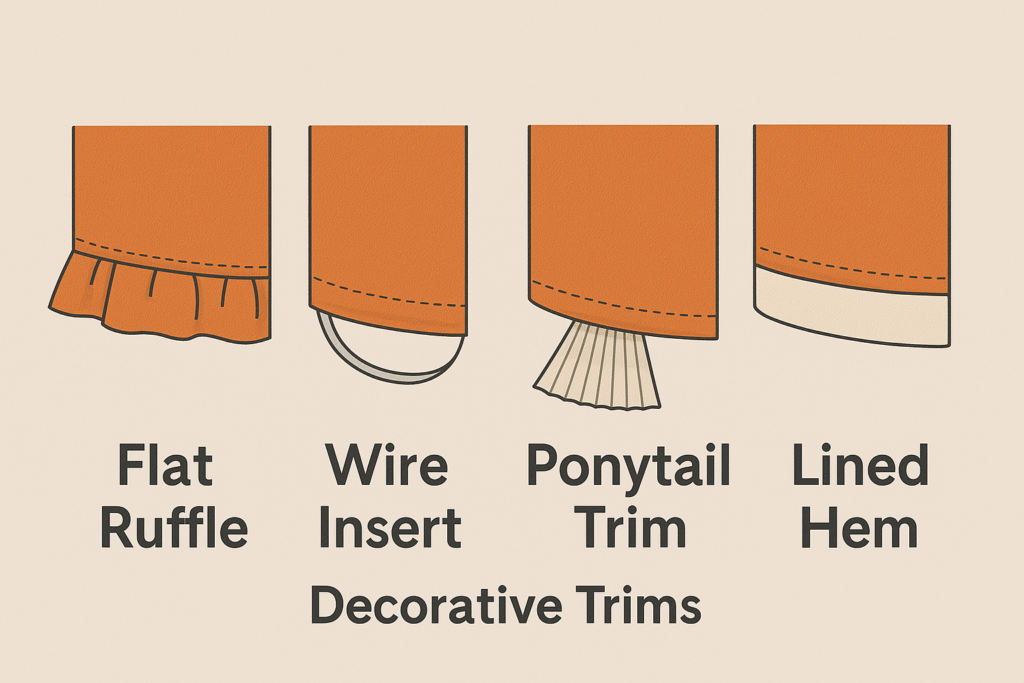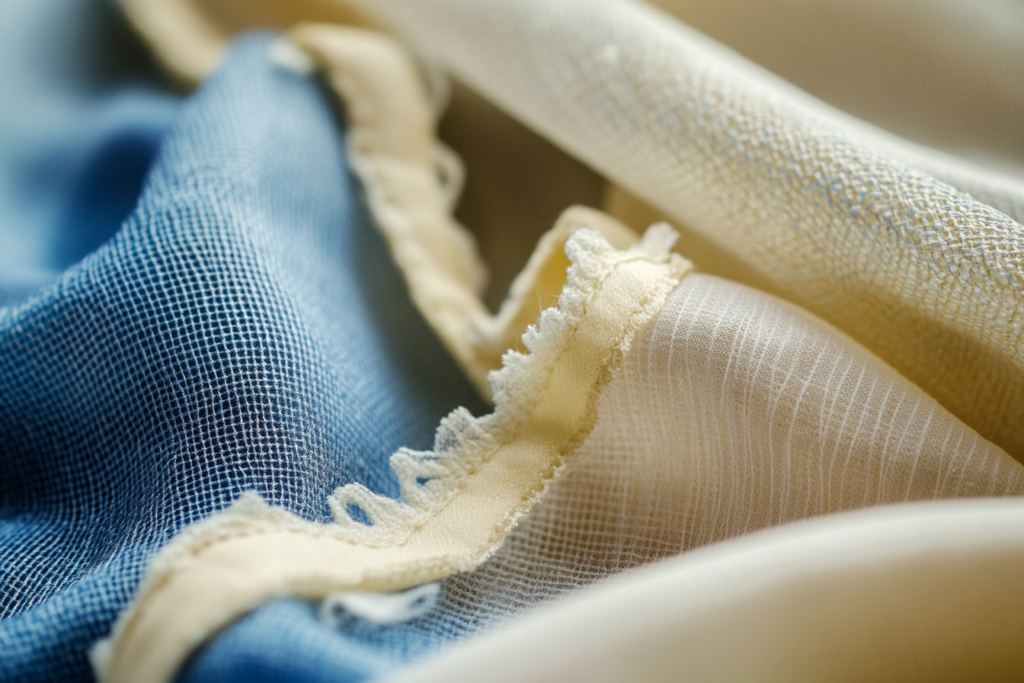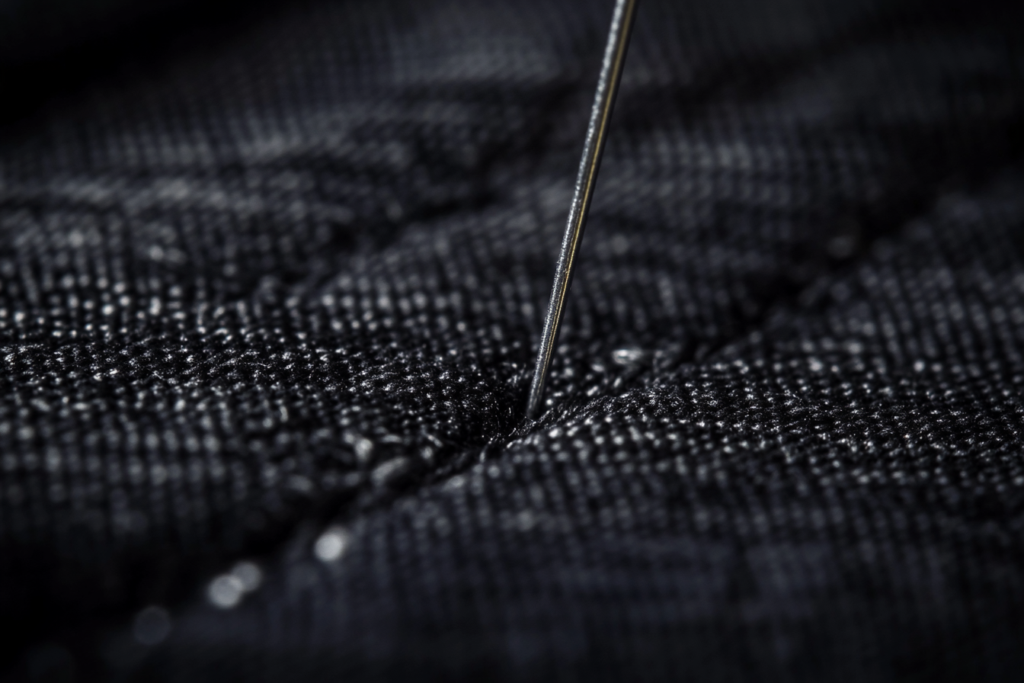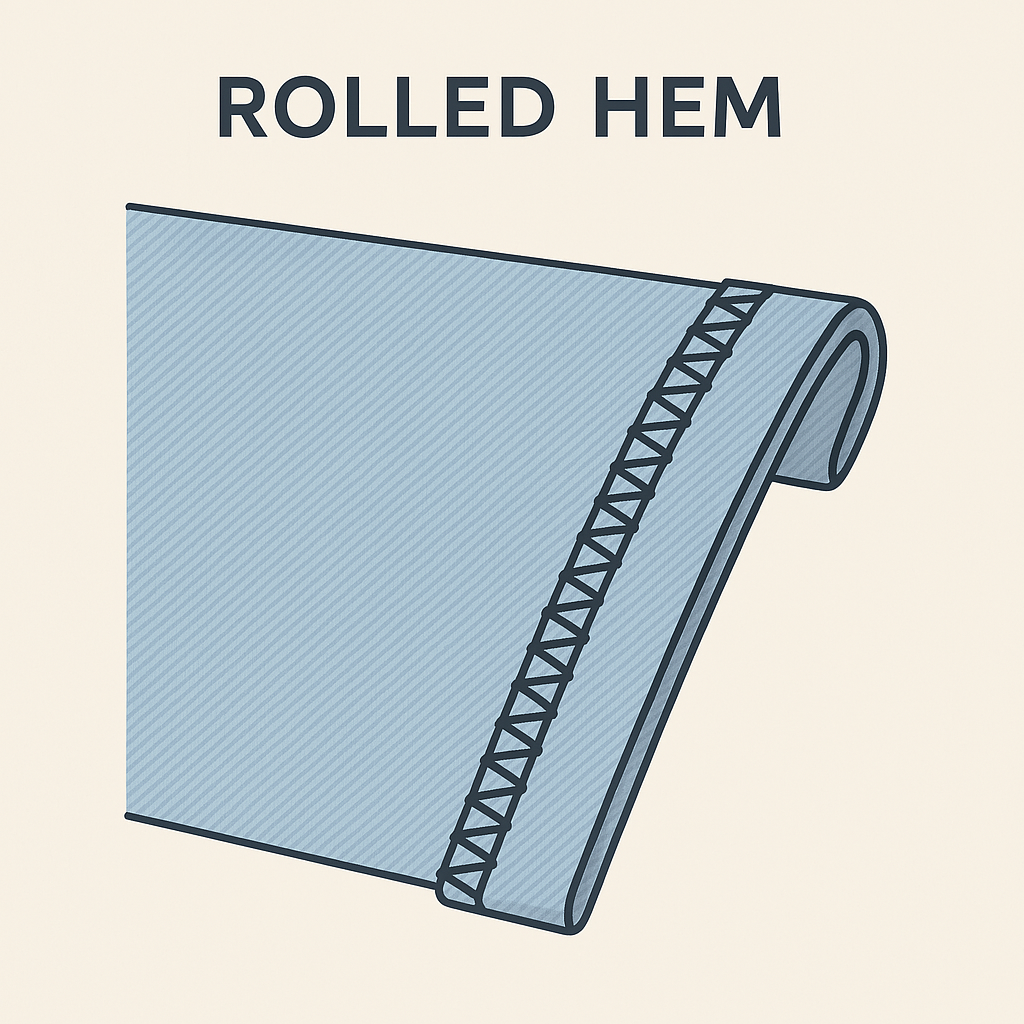Decorative Trims in Fashion: Hem Treatments for Formal & Feature Garments
✨ What Are Decorative Trims?
Decorative trims are hem treatments that go beyond functionality, serving to enhance the aesthetic appeal of garments—especially formal wear, costumes, and novelty fashion. Decorative trims may include ruffles, ponytails, lined hems, or even wiring to create structured silhouettes, movement, and surface texture.
These trims can be sewn into hems, waistlines, or sleeve edges and are typically made from bias-cut fabric, elastic knits, or inserted accessories like plastic strips or wire to modify shape and structure.
🧵 Common Types of Decorative Trims
🔹 Flat Ruffle
- Made from elastic or woven fabric
- Very narrow hem added to finish the edge
- Used in skirts, blouses, and dresses
- Can stretch slightly if fabric is elastic knit
- Creates gentle flair and femininity
🔹 Wire or Plastic Insert Trims
- Wire or flexible plastic strips are sewn into the hem
- Used to form a structured edge that retains its shape
- Common in theatrical skirts, bridal gowns, and costumes
🔹 Ponytail Trim
- A stiff woven bias tassel inserted at the hem
- Creates a flared shape and highlights a crisp silhouette
- Often used in structured formal wear or runway pieces
🔹 Lined Hem
- A thick layer of soft bias-cut fabric placed between the hem and garment
- Prevents visible creases and reduces wrinkling in heavy fabrics
- Also provides decorative bulk and soft movement
- Common in high-end coats, waistline trims, and wool skirts
👗 Garment Use Table for Decorative Trims
| Garment Type | Trim Type | Material Used | Purpose | Decorative Value |
|---|---|---|---|---|
| Evening Dress Hemline | Flat Ruffle | Chiffon / Knit | Adds flow and softness | ✅ |
| Bridal Petticoat | Wire Insert | Plastic Strip / Tulle | Forms shape, prevents sagging | ✅ |
| Runway Coat Waist | Ponytail Trim | Woven Bias Tassel | Flared effect, structural silhouette | ✅ |
| Wool Pencil Skirt Hem | Lined Hem | Bias-cut Soft Fabric | Minimizes wrinkles and softens folds | Optional |
| Embellished Top Hem | Decorative Stripe | Contrasting Trim Fabric | Adds a defined, stylish border | ✅ |
💡 Best Practices for Using Decorative Trims
- Choose flexible fabrics for curved or ruffled edges.
- Use bias-cut strips to ensure natural flow or structured alignment.
- For wired trims, encase wires securely to avoid poking or discomfort.
- Press lined hems carefully to keep them smooth and hidden.
- Place seam allowances inside the trim (as seen in Figure 10.10d) for a clean appearance.
🎯 Design Tips
- Match or contrast the trim color for stylistic variation.
- Use lined hems for heavy garments like wool coats or gowns where structure is important.
- Use pony trims or wire inserts in performance costumes or fashion-forward collections.
- Make sure decorative trims align with the budget, production timeline, and machine capabilities.
📌 Summary
Decorative trims are more than just embellishments—they shape the look, feel, and fit of a garment. From the delicate flair of a flat ruffle to the structural support of lined hems and ponytail trims, these finishing techniques are essential in formalwear, runway fashion, and costume design. Understanding trim types and their applications can elevate design precision and product appeal.




